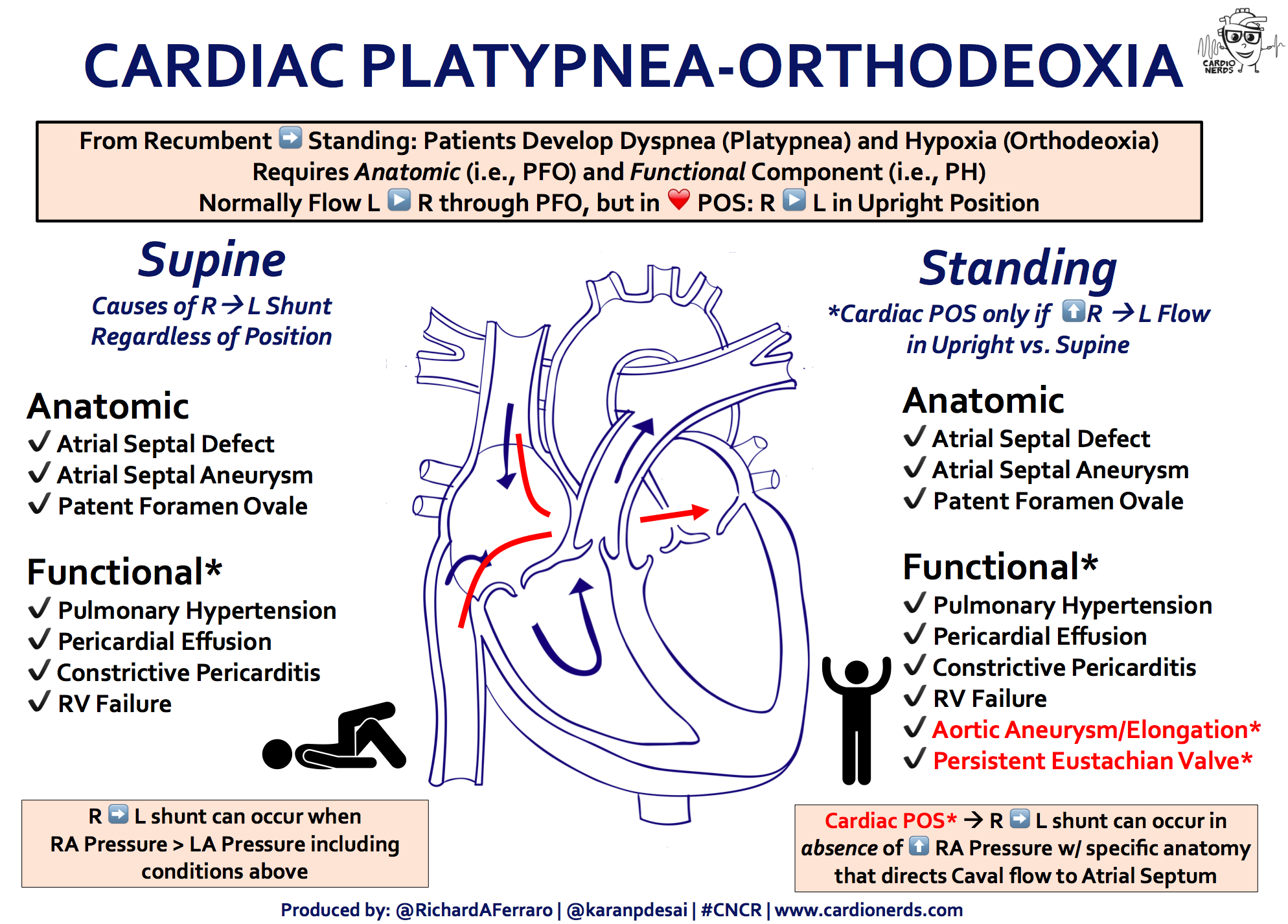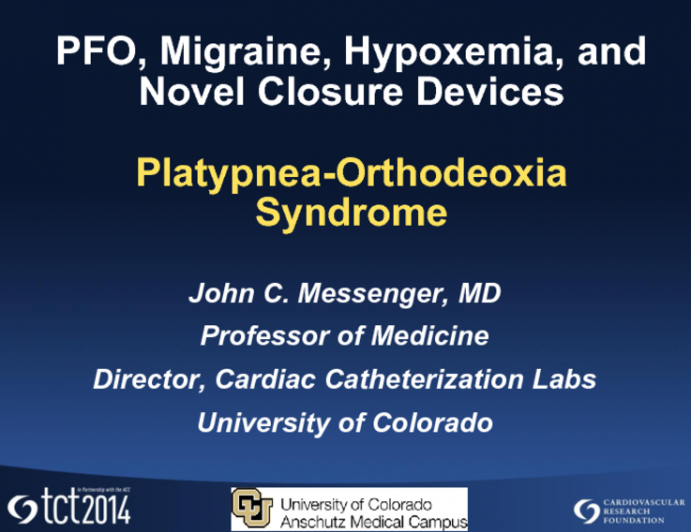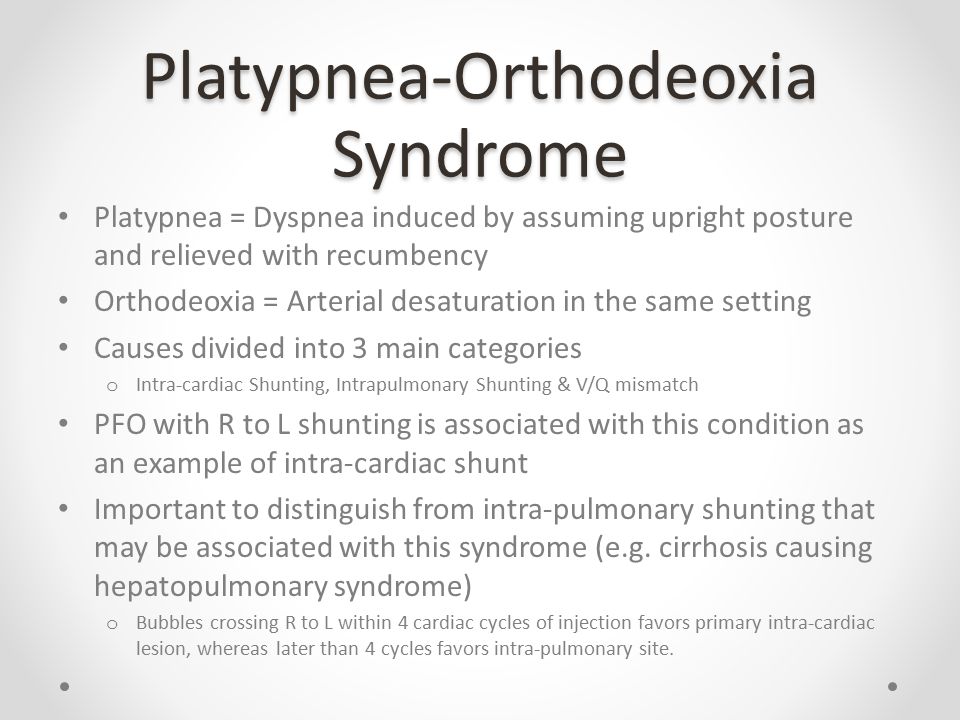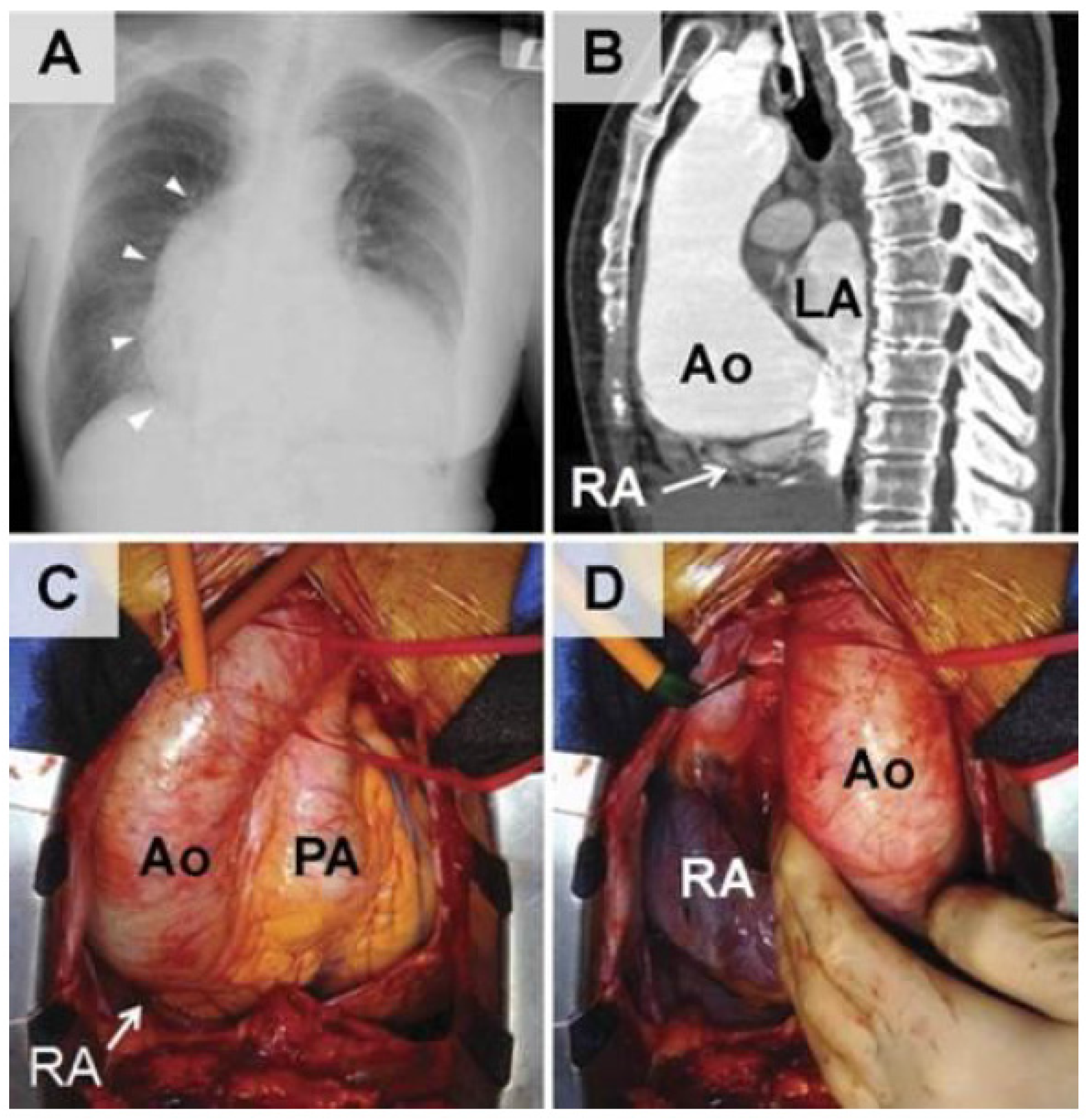Platypnea-orthodeoxia Syndrome
Platypnea-orthodeoxia syndrome. Dyspnea and hypoxemia occur when the patient is sitting upright or standing with an improvement in dyspnea and hypoxemia in the recumbent positioning. Burchell was the first to describe a case of platypnea orthodeoxia syndrome over half a century ago. The difficulty breathing is.
Platypneaorthodeoxia syndrome POS is a rare but clinically important form of dyspnea. Platypneaorthodeoxia syndrome is a condition in which a person has shortness of breath and low oxygen saturations when upright platypnea and orthodeoxia but no symptoms when lying down. Platypneaorthodeoxia syndrome is a striking but relatively rare clinical entity characterized by dyspnea in the upright position platypnea accompanied by desaturation orthodeoxia that improves in the supine position.
Platypnoeaorthodeoxia is an uncommon syndrome of dyspnoea induced by upright posture with associated arterial hypoxaemia which is subsequently relieved by recumbency. Cardiac POS is predominantly caused by congenital interatrial communications CIC paired with changes in the thoracic anatomy allowing orthostatic right to left cardiac shunting. Curative treatment consisted of percutaneous closure of the foramen ovale.
In some cases the cause is multifactorial. Platypnea-orthodeoxia P-O syndrome is an under-diagnosed condition characterized by dyspnea and deoxygenation when changing from a recumbent to an upright position. Since Burchell et al 1 described this rare syndrome over half a century ago no more than 50 cases have been reported in the literature.
Rare cardiac causes include patent foramen ovale and atrial septal defect ASD. Platypnea-Orthodeoxia Syndrome POS is dyspnea and hypoxemia in the upright position that improves in the supine position. These findings contrasted sharply with what we expected to discover because her distended jugular vein first suggested congestive heart failure.
The clinical picture is distinguished by shortness of breath that worsens on standing due to an accentuation of oxygen desaturation and instead improves at least partly in the recumbent position. Platypnea-orthodeoxia syndrome POS is an extraordinary medical condition characterized by positional dyspnea platypnea and arterial desaturation or hypoxemia orthodeoxia in the setting of an upright position. Platypnea-orthodeoxia is a rare and poorly understood syndrome of orthostatic accentuation of a right-to-left shunt usually across a patent foramen ovale.
Platypnea-orthodeoxia is a rare and poorly understood syndrome of orthostatic accentuation of a right-to-left shunt usually across a patent foramen ovale. Pathopysiologic underlying mechanisms are determined by an atrial right-to-left shunt.
PFO and Platypnea-Orthodeoxia Syndrome Platypnea-orthodeoxia POD is a rare entity that is characterized by dyspnea and accompanying hypoxemia in the upright position.
The difficulty breathing is. Platypnea-orthodeoxia syndrome is caused mainly due to intrapulmonary shunts like pulmonary arteriovenous malformations and hepatopulmonary syndrome. The syndrome is characterized by dyspnea and arterial oxygen desaturation that occurs in the upright position and improves with recumbency. It can be caused by ventilation-perfusion mismatch intracardiac shunting or pulmonary shunting. The syndrome is most commonly recognized in patients with a history of a major pulmonary disorder such as pneumonectomy recurrent pulmonary emboli or chronic lung disease. Orthodeoxia is a condition in which desaturation gets evident in an upright position from a supine position. Platypnea-orthodeoxia is a relatively uncommon but striking clinical syndrome characterized by dyspnea and deoxygenation accompanying a change to a sitting or standing from a recumbent position. Diagnosis was confirmed by transoesophageal contrast echocardiography which showed a patent foramen ovale. 1 The syndrome occurs when there is right to left shunting of blood usually via an interatrial communication in the presence of normal pulmonary artery pressure.
Platypnea-orthodeoxia is a relatively uncommon but striking clinical syndrome characterized by dyspnea and deoxygenation accompanying a change to a sitting or standing from a recumbent position. Burchell was the first to describe a case of platypnea orthodeoxia syndrome over half a century ago. It is usually caused by increased right-to-left shunting of blood on assuming an upright position with normal pressure in the right atrium. Rare cardiac causes include patent foramen ovale and atrial septal defect ASD. These findings contrasted sharply with what we expected to discover because her distended jugular vein first suggested congestive heart failure. Pathopysiologic underlying mechanisms are determined by an atrial right-to-left shunt. The platypnea orthodeoxia syndrome POS is a rare condition characterized by dyspnea and hypoxia in upright position.

















32996-1.fp.png)


34052-3.fp.png)











34069-9.fp.png)







32861-x.fp.png)




Post a Comment for "Platypnea-orthodeoxia Syndrome"